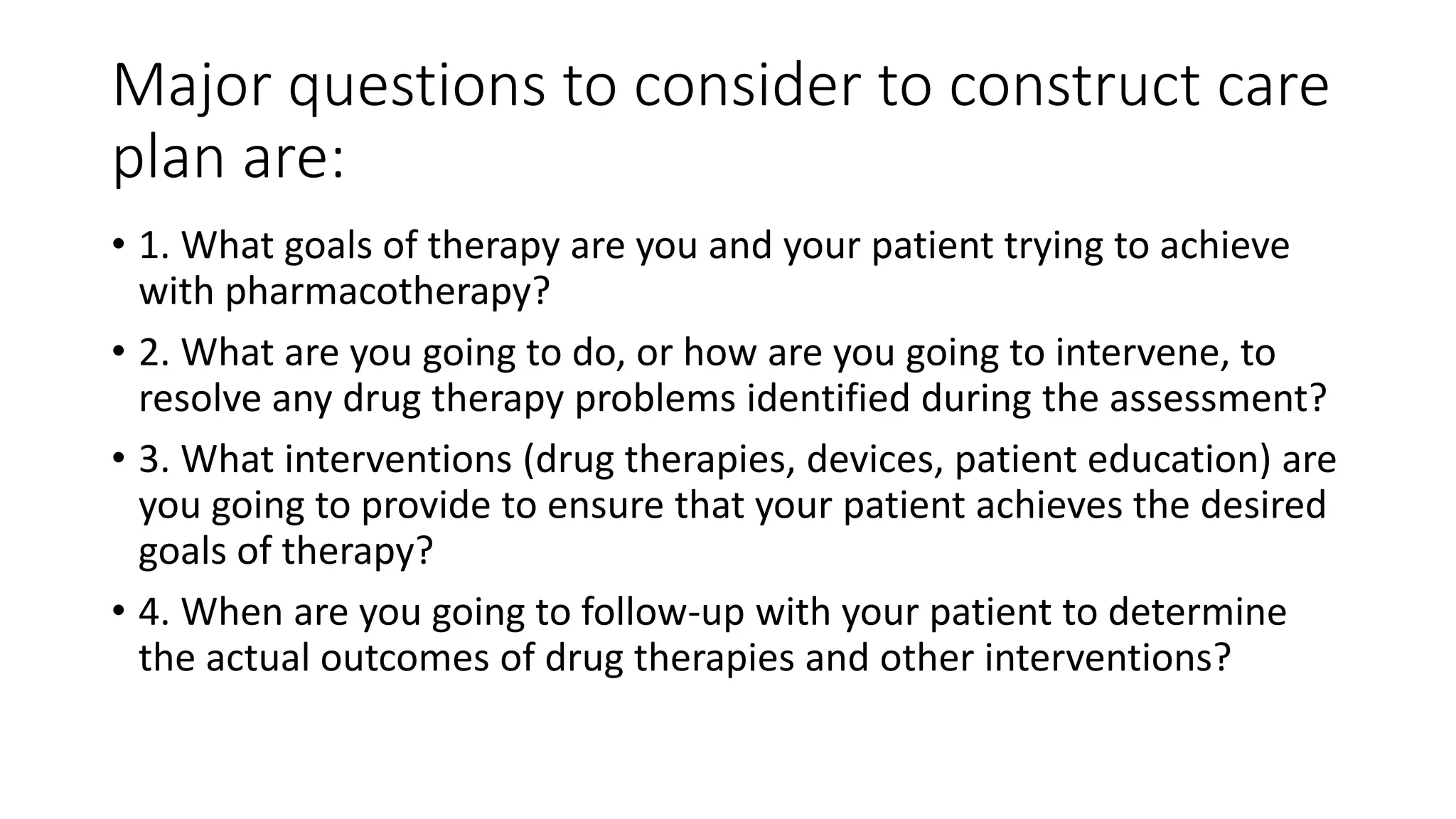1. The document discusses pharmaceutical care and developing a patient care plan. It defines pharmaceutical care and its basic elements which include being patient-oriented and focusing on prevention of drug-related problems.
2. Developing a care plan involves establishing goals of therapy for each medical condition, determining interventions to resolve issues and achieve goals, and scheduling follow-up evaluations. Goals should be measurable and include timeframes.
3. The care plan documentation includes the patient's medical conditions, drug therapy problems, goals of therapy, interventions, and follow-up dates. This ensures a systematic approach to managing a patient's pharmacotherapy needs.













































![Activities performed in follow-up
Observe/measure the positive result the patient has
experienced from drug therapy. [effectiveness]
Observe/ measure any undesirable effects that were
cause by drug therapy (safety)
Determine the actual dosage of medication the patient is
taking that is producing the result observed (compliance)
Make clinical judgement of the status of patient’s medical
condition/ illness being managed by drug therapy.
(outcome) At each evaluation patient status can be
resolved. This status states patient present condition and
what was done to drug therapy in response to patient
condition.
Reassess the patient to determine if he/she developed
any new drug therapy problem.](https://image.slidesharecdn.com/pcn612patientdataevaluation-221023015318-9f3da08f/75/PCN-612-PATIENT-DATA-EVALUATION-pptx-46-2048.jpg)






